Deciding whether to fertilize your arborvitae can be tricky without some help. Do you want to fertilize your tree but don't know what kind will work best, or if your arborvitae even needs it? We have done plenty of research to find you the answers. So let's get right into it.
Arborvitae does just fine without fertilizer. With that said, you can use fertilizer on your tree, as long as it is not newly planted or very young. When it comes to the type of fertilizer that works best on arborvitae, a slow-release, nutrient-rich option is the way to go. Generally, this evergreen species thrives on its own, but you can certainly try fertilizing if you start to notice stunted growth.
As we begin, we will cover all things arborvitae and tag some helpful products. Whether you want to speed up the growth of your tree or supply it with extra nutrients, we've got you covered. With that said, let's dive right into this topic!
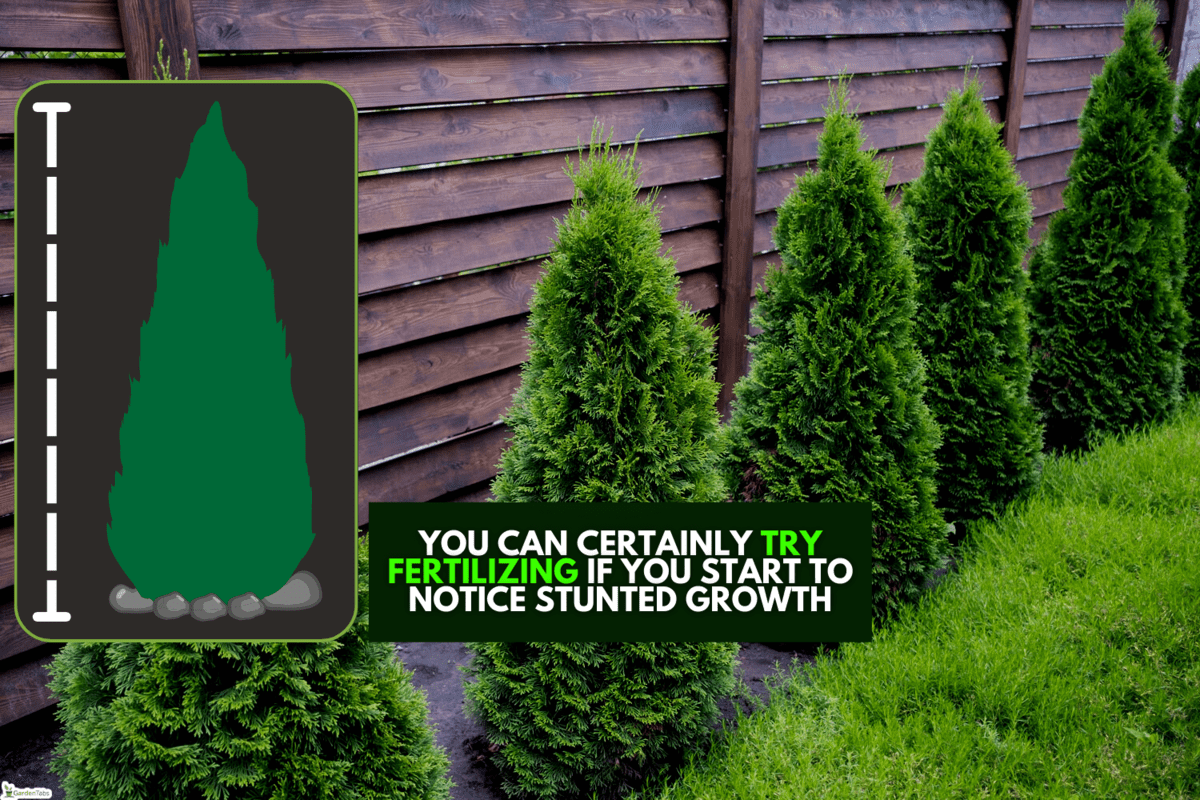
Does My Arborvitae Tree Need Fertilizer?
When it comes to arborvitae needing fertilizer, this is not always the case. Younger arborvitae trees, in particular, do not react well to fertilizer because of their shallow root systems being sensitive to the ingredients commonly found in fertilizing products. If your arborvitae tree is more developed, this is when we think fertilizer is fine to use on your plant.

What Is The Best Fertilizer For Arborvitae?
Fertilizer-wise, it is best to use a slow or continuous-release option on an arborvitae tree. This is in part because of the sensitive root system evergreens typically have and how instant formulas can end up damaging your plant. Another benefit of slow-release fertilizer is that you won't have to worry about adding more during the growing season. Most times, slow or continuous formulas feed your plant for up to six months, which is perfect for arborvitae.
Scotts Evergreen Tree & Shrub Continous Release Food
Here is a slow, continuous release of evergreen fertilizer from the Scotts to try. This plant food encourages root and foliage growth, feeds up to two months between uses, and promises not to burn your plant's root system.
Follow this link to see it on Amazon.
How Do You Fertilize Arborvitae Trees?
Typically, you should fertilize your arborvitae tree in the early spring before its growing season. Arborvitae does not do well with tons of fertilizer, so using less is better for your tree's health. Generally, it is a good idea only to use slow or continuous-release plant food rather than an instant option to prevent your plant's roots from going into shock.

Are Coffee Grounds Good For Arborvitae?
If you want to try adding coffee grounds to your arborvitae trees soil, we recommend against it. Although arborvitae enjoys slightly acidic soil, adding coffee grounds can alter your plant's pH balance, causing root and growth issues. In general, save using coffee grounds for plants like azaleas or blueberries, which can handle higher acidity levels.
How Fast Does An Arborvitae Tree Grow?
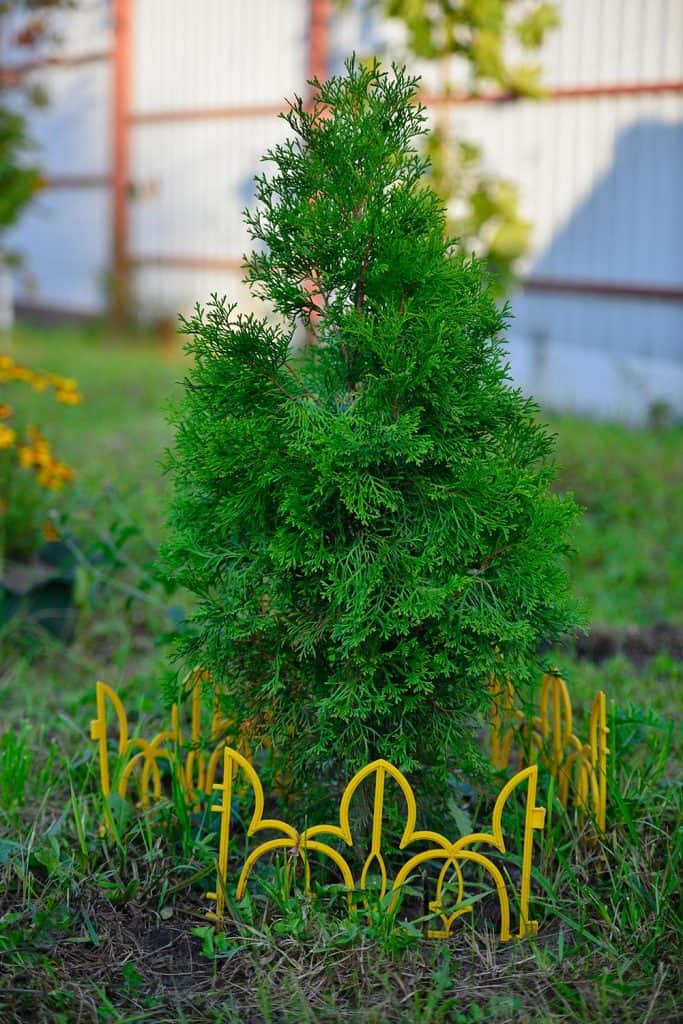
Usually, an arborvitae tree grows at a moderate speed of one to two feet per year until it reaches full maturity. Of course, environmental conditions will impact your tree's growth rate, as well as watering and overall soil health. Generally, arborvitae trees prefer full sun, well-draining soil, and grow in zones 2 through 7.
How Do I Make My Arborvitae Thicker?
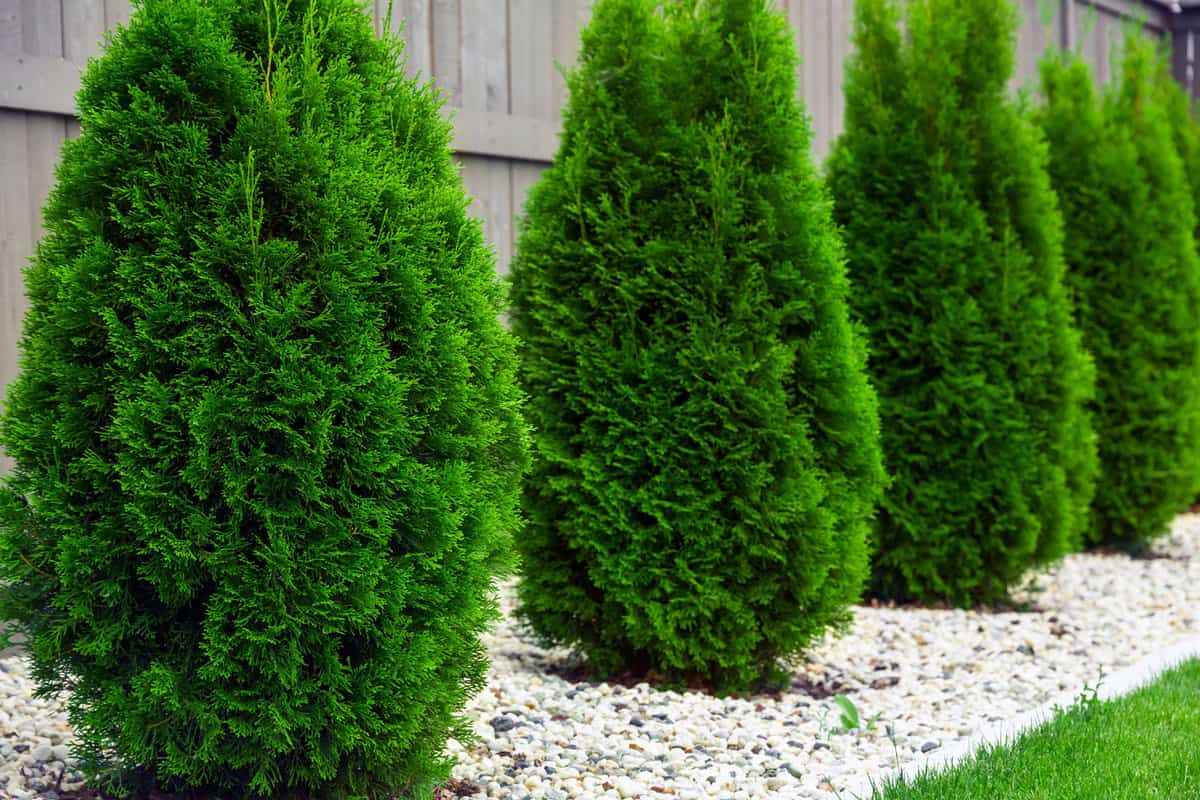
If your arborvitae tree is looking leggy, there are a few ways to fix this issue. First, trim any overhead branches that may be blocking the sun from your tree, which can cause it not to grow as well. Next, make sure you prune your arborvitae regularly so that it can focus its energy on new growth.
Another way to encourage arborvitae to thicken out is to add fertilizer around the base of your tree that is rich in nitrogen. Regardless, it is always a good idea to trim back arborvitae before spring and not let them grow out too wide and leggy.
EasyGo Product Slow-Release Nitrogen Fertilizer
Here is a slow-release nitrogen-rich fertilizer from EasyGo Product that will work for arborvitae. This fertilizer comes in a 32-pound bag, is eco-friendly, and promises to be helpful even during drought.
Check it out on Amazon by clicking here.
Can I Grow Arborvitae In The Shade?
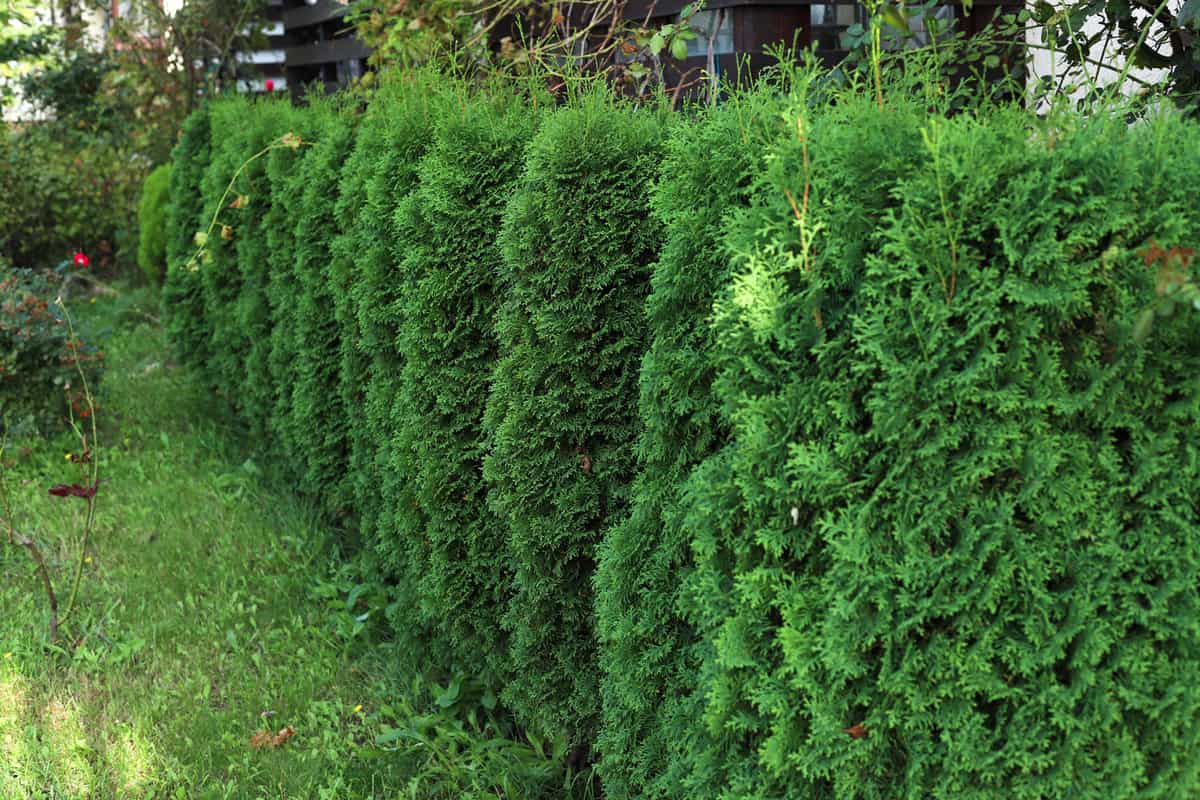
For those of you with shadier gardens, hope is not all lost for planting arborvitae. Although this plant prefers to have at least six hours of full sun, it can still grow in the shade. Generally, as long as your tree gets four hours of partial to full sun, it should be fine living in a shady spot. With that said, arborvitae grown in the shade tends not to be as thick as those planted in full sun.
What Is The Best Time Of Year To Plant Arborvitae?
When it comes to the best time to plant an arborvitae tree, early spring is what we recommend. Planting your tree in the earlier springtime allows it to establish and grow its root system before the winter, which is necessary for its survival. Generally, it's best to plant an evergreen right as the weather warms up a bit, so it doesn't go into shock.
Are Arborvitaes Roots Invasive?
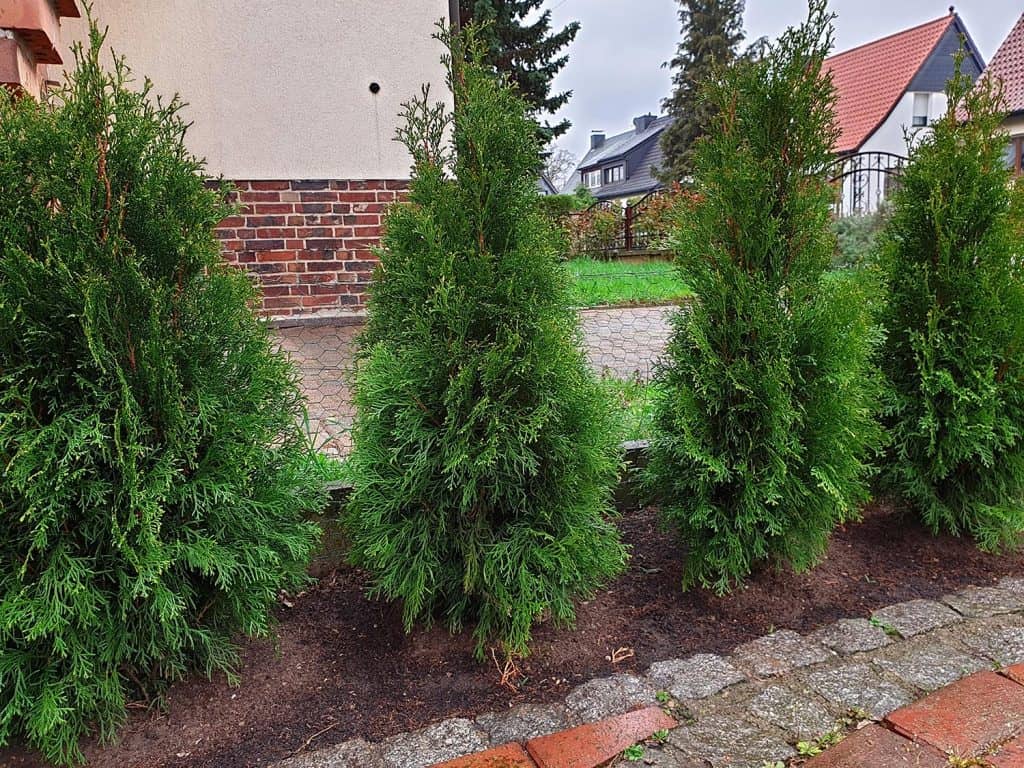
From what we found, no, arborvitae trees do not have invasive roots. Typically, large arborvitaes roots only reach 18 to 24 inches deep, so you don't have to worry about them taking over your garden. Even if your arborvitae is near a structure like your home or a pool, you should be fine with it root-wise. If you start to notice root-related problems, try re-digging the area or installing underground barriers to guide your tree's roots downward.
24-Inch Tree Root Barrier
Here we have a 24-inch root barrier system from DeepRoot to try. This US-made barrier protects your tree's roots while guiding them downward and comes in various depth sizes.
View this product on Amazon here.
How Far Apart Should You Plant Arborvitae?
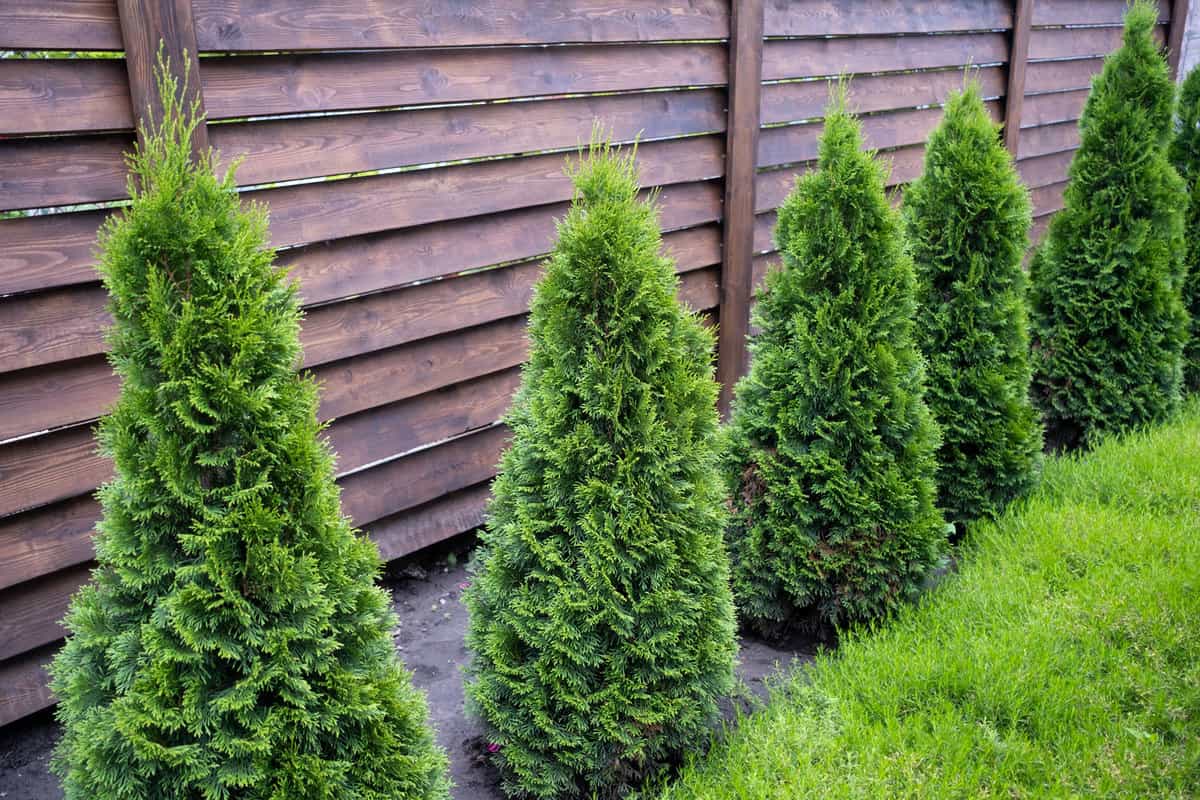
In general, you should plant arborvitae around two to four feet apart. If you are using your trees to create a privacy barrier, we suggest keeping them around two feet apart so they will eventually create a wall. Arborvitaes usually have a mature width of three to five feet, so space them enough to allow their roots and branches to develop. Although these trees are on the smaller side width-wise, arborvitaes can reach heights of up to 15 to 20 feet.
To Wrap It Up
Whether you have arborvitae in your garden or want to plant one, we found they do not necessarily need fertilizer. Although these gorgeous evergreens don't require fertilizer to be healthy and full, you can certainly use some on your tree. We recommend a slow or continuous-release formula and one that is rich in nitrogen for arborvitaes.
Generally, if you notice your tree lacking foliage or not growing fast enough, this is a good time to add some fertilizer to your plant. Regardless, make sure not to fertilize newly planted arborvitae and prune them regularly before the spring growing season.
Made it to the end? Check out these helpful related plant posts!
Arborvitae Getting Too Tall - Can You Cut Off The Top?
How Big Do Arborvitae Get? [By Type Of Arborvitae]
19 Fast Growing Shrubs For Screening Purposes




